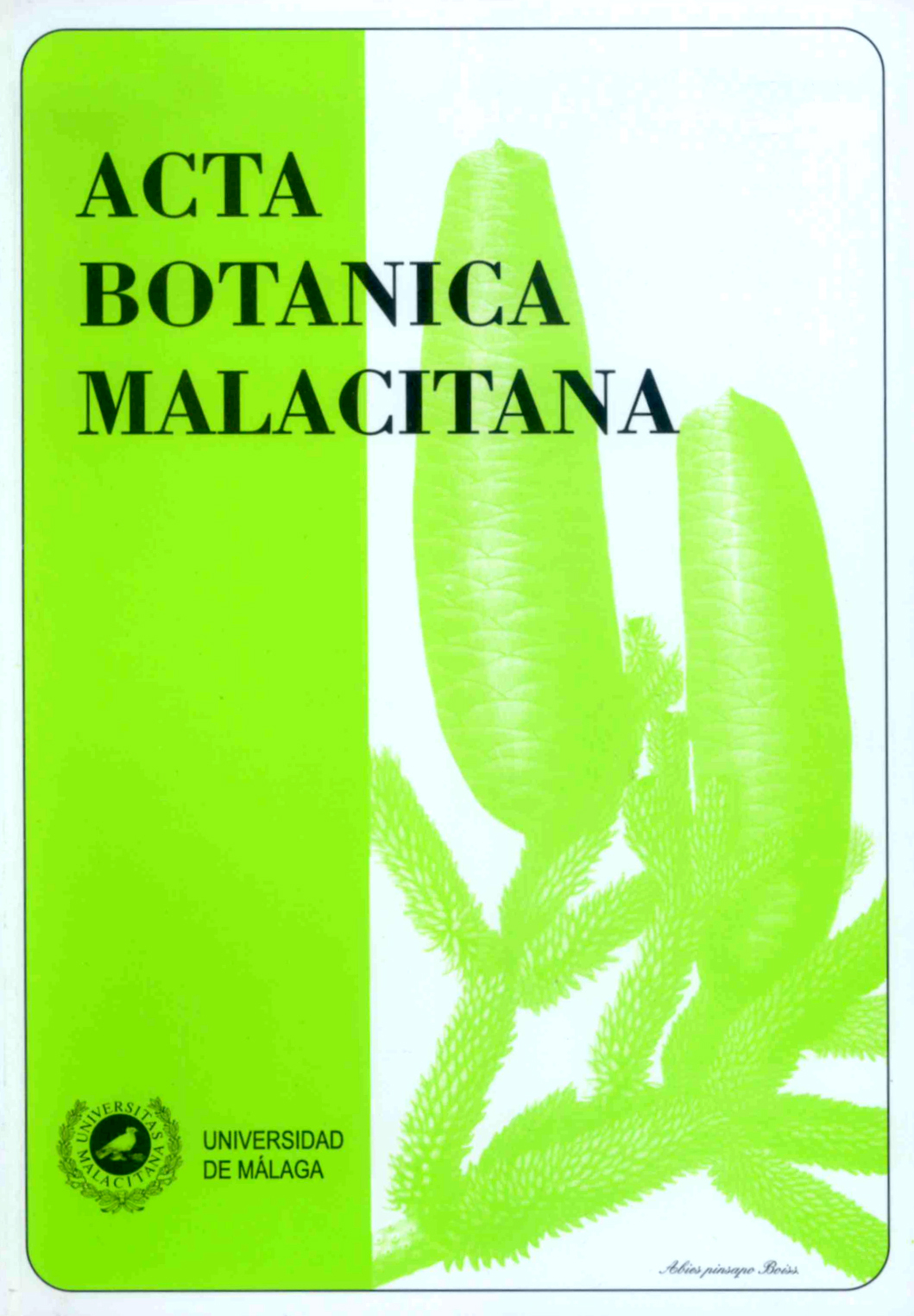New records of interesting xenophytes in the Iberian Peninsula. Nuevas citas de xenófitos interesantes en la Península Ibérica.
DOI:
https://doi.org/10.24310/abm.v33i0.6978Abstract
ABSTRACT. New records of interesting xenophytes in the Iberian Peninsula. Botanical inventories in various parts of Spain mainly between 2005 and 2007 yielded numerous chorological novelties. Cyperus prolifer is probably reported for the first time in Europe. Chenopodium simplex, Dactyloctenium aegyptium, Digitaria violascens, Eragrostis frankii, Ipomoea x leucantha, Ludwigia peploides subsp. montevidensis, Malvastrum coromandelianum, Melinis repens subsp. repens, Oenothera indecora subsp. indecora, Panicum philadelphicum subsp. gattingeri and Solanum americanum are probably recorded for the first time from Spain. Crassula campestris is first cited from Portugal. New provincial records include: Abutilon grandifolium (Barcelona), Amaranthus palmeri (Lérida), Amelichloa caudata (Valencia), Anoda cristata (Huelva), Arctotheca calendula (Gerona), Asparagus setaceus (Huelva), Bidens subalternans (Huelva), Cardiospermum halicacabum (Alicante), Cenchrus incertus (Cádiz), Cestrum parqui (Barcelona), Cyperus esculentus (Huelva), Datura ferox (Huelva), Elymus elongatus subsp. ponticus (Lérida, Sevilla), Eragrostis mexicana subsp. virescens (Huelva), Eragrostis pectinacea (Huelva), Galinsoga quadriradiata (Huelva), Hydrocotyle bonariensis (Huelva), Leptochloa uninervia (Granada, Huesca), Oenothera oehlkersi (Gerona), Rumex cristatus (Gerona), Senna obtusifolia (Huelva), Setaria faberi (Huelva), S. parviflora (Huelva), Solanum elaegnifolium (Alicante), S. linnaeanum (Granada), S. physalifolium (Huelva) and Verbena litoralis var. brevibracteata (Huelva). Previous Andalusian records of Galenia secunda turned out to be in error for G. pubescens. A large majority of the cited taxa is of American origin.
Key words. New records, Xenophytes, Spain.
RESUMEN. Nuevas citas de xenófitos interesantes en la Península Ibérica. Diferentes campañas de herborizaciones en España entre los años 2005 -2007, han propiciado el descubrimiento de diferentes novedades corológicas para su flora. Se cita como novedad para Europa Cyperus prolifer. Son probablemente nuevas citas para España Chenopodium simplex, Dactyloctenium aegyptium, Digitaria violascens, Eragrostis frankii, Ipomoea x leucantha, Ludwigia peploides subsp. montevidensis, Malvastrum coromandelianum, Melinis repens subsp. repens, Oenothera indecora subsp. indecora, Panicum philadelphicum subsp. gattingeri y Solanum americanum. Se cita como novedad por el Portugal Crassula campestris. Se incluyen como novedades provinciales: Abutilon grandifolium (Barcelona), Amaranthus palmeri (Lérida), Amelichloa caudata (Valencia), Anoda cristata (Huelva), Arctotheca calendula (Gerona), Asparagus setaceus (Huelva), Bidens subalternans (Huelva), Cardiospermum halicacabum (Alicante), Cenchrus incertus (Cádiz), Cestrum parqui (Barcelona), Cyperus esculentus (Huelva), Datura ferox (Huelva), Elymus elongatus subsp. ponticus (Lérida, Sevilla), Eragrostis mexicana subsp. virescens (Huelva), Eragrostis pectinacea (Huelva), Galinsoga quadriradiata (Huelva), Hydrocotyle bonariensis (Huelva), Leptochloa uninervia (Granada, Huesca), Oenothera oehlkersi (Gerona), Rumex cristatus (Gerona), Senna obtusifolia (Huelva), Setaria faberi (Huelva), S. parviflora (Huelva), Solanum elaegnifolium (Alicante), S. linnaeanum (Granada), S. physalifolium (Huelva) y Verbena litoralis var. brevibracteata (Huelva). Se actualiza la nomenclatura en Andalucía de las citas previas del taxón Galenia secunda, que se cambia por Galenia pubescens, su nombre correcto. Una gran mayoría de los taxones citados son de origen americano.
Palabras clave. Novedades, Xenofitos, España
Downloads
Metrics
Downloads
Published
How to Cite
Issue
Section
License
All information related to the licensing of published works in Acta Botanica Malacitana and copyright can be found in our Editorial Policy.







1.png)
